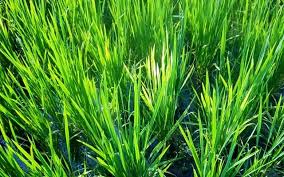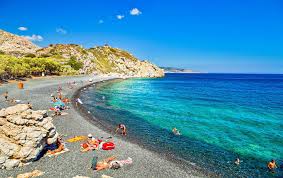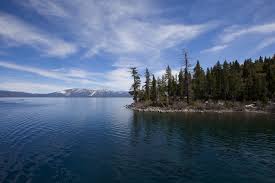Today’s Current Affairs: 23rd June 2025 for UPSC IAS exams, State PSC exams, SSC CGL, State SSC, RRB, Railways, Banking Exam & IBPS, etc
Table of Contents
Himalayan Brown Bear:

A rare sighting of a Himalayan brown bear, reportedly with its family, in the Nelong and Jadung Valleys has sparked excitement within Gangotri National Park, Uttarakhand.
- Himalayan Brown Bear is the largest mammal found in the high-altitude regions of the Himalayas.
- It is one of the most ancient brown bear lineages.
- Scientific Name: Ursus arctos isabellinus
- It is also known as the “Himalayan Red Bear” and the “Isabelline Bear”. It is known as Denmo in the Ladakhi language.
- They are found in northwestern and central Himalayas, including Pakistan, India, Nepal, the Tibetan Autonomous Region of China, and Bhutan.
- They hibernate in dens during the winter.
- They are solitary and only interact with each other to mate or fight over mates. The only exception to this is a mother and her cubs.
- Life span: 20 to 30 years in the wild.
- Conservation Status:
- IUCN Red List: Critically Endangered
- Wildlife (Protection) Act of 1972: Schedule I
- CITES – Appendix I.
Rice Yellow Mottle Virus:

Rice Yellow Mottle Virus (RYMV), a highly contagious plant disease, is ravaging rice crops across Africa, leading to major yield losses and posing a serious threat to food security.
- It originated in the Eastern Arc Mountains of Tanzania in the 1800s from wild grasses, spreading to the Kilombero Valley and Morogoro (Tanzania) before expanding across Sub-Saharan Africa.
- Though endemic to Africa, it has also been reported in Turkey.
- The virus is a member of the Sobemovirus known for its high genetic variability, allowing it to evolve rapidly.
- Vectors include beetles (Chrysomelidae), grasshoppers, cows, rats, and donkeys.
- It spreads through insect vectors, mechanical means (sap or water contact), and root injuries, but is not seed-borne.
- Symptoms: Yellow-green streaks appear on young leaves, leading to mottling and leaf twisting. Plants show stunted growth, poor panicle formation, sterility, and may eventually die.
- Impact on Rice Production: Yield losses range from 10% to 100%, with early infection causing greater damage.
Level 2 Travel Advisory for India:

The US State Department issued a Level 2 Travel Advisory for India, urging citizens to exercise increased caution due to rising violent crime and terrorism threats.
- A Level 2 advisory is part of the US State Department’s 4-level travel alert system that advises citizens on international travel risks. Level 2 means “Exercise Increased Caution”.
- Published by: US Department of State, Bureau of Consular Affairs.
- Four Categories of US Travel Advisories:
- Level 1 – Exercise Normal Precautions
- Level 2 – Exercise Increased Caution
- Level 3 – Reconsider Travel
- Level 4 – Do Not Travel
- Latest Advisory on India:
- Violent Crime and Sexual Assaults:
- Reports of rape and violent attacks at tourist destinations have risen.
- The advisory urges travellers, especially women, to avoid solo travel.
- Terrorism Threats:
- Terror attacks may occur without warning in crowded spaces — markets, public transport hubs, religious places, and government buildings.
- Restricted access for US officials in parts of eastern Maharashtra, Telangana, and West Bengal due to Naxalite presence.
- High-Risk Areas Identified:
- Jammu & Kashmir: Do not travel due to terrorism and unrest.
- India–Pakistan Border: Do not travel due to armed conflict risk.
- Central & Eastern India (e.g., Chhattisgarh, Jharkhand): Terror threats by Naxalite groups.
- Manipur: Avoid due to ethnic violence.
- Northeastern states: Reconsider travel to parts of Arunachal Pradesh, Sikkim, and remote border regions due to insurgent activity.
- Legal and Travel Restrictions:
- Satellite phones and GPS devices are banned; violation leads to jail or fine.
- E-visas are not valid for land crossings.
- Violations of immigration rules can lead to deportation or legal action.
- Violent Crime and Sexual Assaults:
RBI’s New Project Finance Norms Offer Relief to NBFCs:

The Reserve Bank of India (RBI) has released its final guidelines for project finance lending, introducing a more lenient framework for provisioning norms and offering relief to key non-banking financial companies (NBFCs) like PFC and REC. These norms, applicable from October 1, 2025, are expected to enable smoother transitions for long-term infrastructure financing while safeguarding financial stability.
RBI Guidelines :
- Effective Date: Applicable to loans sanctioned on or after October 1, 2025.
For under-construction projects:
- 1% standard provisioning
- 1.25% for Commercial Real Estate (CRE).
Once operational:
- 0.4% for general project finance.
- 0.75% for CRE-Residential Housing.
- 1% for CRE projects.
- No Retrospective Application: Existing loans that have achieved financial closure are exempt from the new norms.
Flexibility on Project Delays
- Up to 3 years allowed for infrastructure projects.
- Up to 2 years for non-infrastructure projects.
- Additional Provisioning required for delay deferments but reversed after commencement.
Tomahawk Missile:

The US has entered Israel’s war with Iran, launching precision strikes on Tehran’s key nuclear facilities using Tomahawk cruise missiles and GBU-57 bunker busters.
- Tomahawk Missile is a long-range, subsonic cruise missile developed by the United States Navy.
- It is launched from ships or submarines through a Vertical Launch System and used for precision strikes on land-based targets.
- Tomahawks were first deployed in combat during Operation Desert Storm in 1991. Since then, they have been used in several major conflicts, including strikes in Syria in 2017.
- Tomahawks can fly at low altitudes, avoiding radar detection, and are guided by advanced GPS, inertial navigation, and terrain contour mapping.
- This makes them highly accurate-with a margin of error of just 10 meters.
- They are built to follow a non-linear path, reducing the chance of interception.
- These missiles have a range between 1,000 and 1,500 miles (1,550 to 2,500 km).
- Tomahawks measure 18.3 feet in length and weigh about 3,200 pounds (4,400 with booster).
- They carry a 1,000-pound conventional warhead or cluster munitions.
- It is powered by a solid propellant during its launch phase. Thereafter, it is powered by a turbofan engine that does not emit much heat, which makes infrared detection difficult.
- Each Tomahawk missile reportedly costs around $2 million.
Chios Island:

More than 100 firefighters assisted by water-dropping helicopters and planes were battling a large wildfire burning near the main town of the eastern Aegean island of Chios recently.
- Chios Island is a Greek island situated in the Aegean Sea.
- It is the fifth-largest island in Greece, with a surface area of 842.29 sq.km.
- It is situated 5 miles (8 km) off the western coast of Turkey.
- It is about 30 miles (50 km) long north-south and from 8 to 15 miles (13 to 24 km) wide.
- It is traversed north-south by mountains culminating in Mount Pelinaíon (1,297 meters).
- The principal town of the island and seat of the municipality is Chios town.
- Chios is notable for its exports of mastic gum, and the island is also known as “the Mastic Island.”
- It is a very attractive island because of its lush vegetation, fine beaches, and unique medieval villages, which are kept in very good condition.
- It is also famously rich in history, said to be the birthplace of Homer as well as several Greek writers and politicians, and historic records date back to the Neolithic Age, and examples of Byzantine architecture can be found across the island.
Lake Tahoe:

Tragedy struck on Lake Tahoe recently when a boat capsized, leaving six people dead and two others missing.
- Lake Tahoe is a cobalt blue freshwater lake located in the Sierra Nevada Mountains, on the border of California and Nevada, United States.
- It is the largest freshwater lake in the Sierra Nevada and the largest alpine lake in North America.
- It is situated at an elevation of 1,897 m above sea level and is the highest lake in the United States.
- It is 22 miles long and 12 miles wide with 75 miles of shoreline. The surface area covers 191 square miles.
- Lake Tahoe’s deepest point is 1,645 feet, making it the second-deepest in the United States after Crater Lake in Oregon.
- Lake Tahoe, with a water volume of 150 km3 is the largest lake by volume in the United States after the Great Lakes.
- There are 63 streams that flow into Lake Tahoe and only one, the Truckee River, that flows out and into Pyramid Lake.
- Unlike most bodies of water in North America, Tahoe’s water never reaches the ocean.
- Lake Tahoe is one of the purest bodies of water in the world, with 99.994% of the water pure.
- The lake and the surrounding area of national forests have been developed as tourist resorts.
Kounis Syndrome:

A prominent Indian industrialist death due to bee sting which raised questions about rare allergic reactions named Kounis Syndrome and sudden heart attacks in healthy adults.
- Kounis Syndrome is a rare medical condition where an allergic reaction triggers a heart problem.
- It is classified as a form of Acute Coronary Syndrome (ACS)–a term typically used for conditions like heart attacks–brought on by an allergic or hypersensitivity response.
- It is sometimes referred to as allergic angina or allergic myocardial infarction.
- It occurs when a person is exposed to a trigger–such as an insect sting, drug, or food–the body’s immune system activates mast cells, which release chemicals including histamine and cytokines.
- These substances:
- Cause sudden spasm or tightening of coronary arteries
- May rupture or erode existing plaque, worsening any blockages
- Reduce blood flow to the heart, leading to ischemia (lack of oxygen) or infarction (tissue death)
- Types of Kounis Syndrome
- Type I: Occurs in individuals with normal coronary arteries. The allergic reaction causes spasms, reducing blood flow and potentially leading to a heart attack.
- Type II: Affects those with existing coronary disease. The allergic reaction destabilises plaques, causing rupture and a full heart attack.
- Type III: Seen in patients with coronary stents. The allergic response may lead to clot formation within the stent.
INS Nilgiri recently joined the Eastern Naval Command:
INS Nilgiri recently joined the Eastern Naval Command and would be an integral part of the Eastern Sword-Sunrise Fleet. It is the first of the indigenously built Project 17A stealth frigates of the Indian Navy. It is designed by the Indian Navy’s Warship Design Bureau and built at the Mazagon Dock Shipbuilders Limited (MDL), Mumbai. The Nilgiri class is a design derivative of the indigenous Shivalik class stealth frigates (Project 17).
New blood group system : Gwada negative
France’s national blood agency, the French Blood Establishment (EFS) has identified a completely new blood group system dubbed as “Gwada negative” which is officially recognised by the International Society of Blood Transfusion (ISBT).It is named EMM-negative and colloquially dubbed “Gwada negative” in reference to the Guadeloupean origin of the woman who carries it.
It is the informal name given to the newly classified EMM-negative blood group system, officially registered by ISBT as ISBT042.
It is defined by the absence of the EMM antigen, which is normally found on red blood cells and is considered a high-incidence antigen. High-incidence antigens are present in nearly all humans but lacking in this new system which is extremely rare and medically significant. Criteria to consider a new blood group a new system: It should be genetically determined, inherited, identifiable via serological or molecular techniques, and have an associated antibody — criteria that EMM-negative meets.
INS Tamal : Set to commission
The Indian Navy is all set to commission its latest stealth multi-role frigate Tamal on 01 Jul 2025 at Kaliningrad, Russia. It is the stealth multi-role frigate belongs to the series of Krivak class frigates inducted from Russia over the past two decades. The ship’s name, Tamal, symbolises the mythical sword used for combat by Indra – the King of the Gods. It is the second ship of the Tushil Class, which are the upgraded versions of their predecessors, Talwar and Teg classes having three ships each. It has been built at Yantar Shipyard in Kaliningrad, Russia, and is the last warship to be inducted from a foreign source, in line with the Government of India’s impetus on Aatmanirbhar Bharat and Make in India initiatives.
Unique Stellar Chemistry of Star A980:
Scientists at the Indian Institute of Astrophysics (IIA), Bengaluru identified a rare helium-rich star (A980) exhibiting a rare chemical composition, challenging existing models of stellar evolution and nucleosynthesis.A980 lies in the Ophiuchus constellation, about 25,800 light years from Earth. It shows the first-ever detection of singly-ionized germanium (Ge II) in an EHe star, with germanium levels eight times higher than in the Sun. A980 is a cool Extreme Helium (EHe) star, a rare class of evolved stars made almost entirely of helium with little to no hydrogen, typically formed through the merger of a helium-rich and a carbon-oxygen rich white dwarf. Stellar models explain how stars form, evolve, and create elements. They suggest heavy elements like germanium form in supernovae or AGB stars, not in Extreme Helium (EHe) stars. However, Star A980, an EHe star, shows unusually high germanium levels, challenging these models. It suggests that element formation may happen during white dwarf mergers, a process not well covered in current theories, indicating the need to revise stellar evolution models.
Operation Midnight Hammer:
The US launched Operation Midnight Hammer, deploying B-2 bombers and bunker-buster bombs in a precision strike on Iran’s nuclear sites (Fordow, Natanz, Isfahan), claiming significant damage to Iran’s nuclear infrastructure. Operation Midnight Hammer is classified US military airstrike targeting Iran’s key nuclear facilities with precision weapons. Launched by: US Department of defence. Objective is severely degrade Iran’s nuclear weapons infrastructure and demonstrate US strategic air power.
Weapons used: B-2 Spirit stealth bombers with GBU-57A/B Massive Ordnance Penetrator (MOP). Tomahawk Land Attack Cruise Missiles launched from a US submarine. Decoy aircraft and support fighter jets for air defence suppression.
Subarnarekha River : Flash Flood
Over 50,000 people were affected in Balasore, Odisha, after a flash flood in the Subarnarekha River caused by heavy rain and release of water from Chandil Dam in Jharkhand.The river originates near Piska/Nagri, close to Ranchi, Jharkhand. The name ‘Subarnarekha’ means “Streak of Gold,” linked to historical gold mining at its origin. States it flows through: Jharkhand, West Bengal, and Odisha. Tributaries of Subarnarekha: Kharkai (joins at Jamshedpur), Kanchi, Roro, Harmu Nadi, Dulunga, Karru, Karakari, Singaduba, Kodia, and Dhamra. It is an independent river system and not a tributary of any larger river.
Insect-Based Livestock Feed:
Indian researchers and ICAR institutes are scaling up insect-based livestock feed to combat antimicrobial resistance (AMR) and lower the environmental impact of conventional animal farming.Feed prepared from nutritious insect species such as black soldier flies, crickets, mealworms, and grasshoppers, used as a sustainable protein source for livestock and aquaculture. Developed by: Pioneered by ICAR and private partners like Ultra Nutri India, Loopworm, and Bhairav Renderers in collaboration with institutes such as CIBA and CMFRI.
Nitish Kumar Announces 3X Hike in Social Security Pensions:
Bihar Chief Minister Nitish Kumar on Saturday announced a threefold increase in social security pensions, raising the monthly amount from ₹400 to ₹1,100 for the elderly, widows, and disabled beneficiaries. With Assembly elections due in October–November 2025, this is the first such hike since Nitish came to power in 2005, and is widely seen as a strategic measure to consolidate voter support.
Bharti Space to Invest ₹313 Cr in Eutelsat’s Satellite Expansion:
Bharti Enterprises’ space arm, Bharti Space Ltd, has committed an investment of ₹313 crore (approximately €31.4 million) in French satellite operator Eutelsat as part of the latter’s ambitious €1.35 billion capital raising initiative. The funds are earmarked for expanding satellite constellations and repaying debt, positioning Eutelsat as a major player in global space-based communications. With this move, France has also emerged as Eutelsat’s top shareholder, signaling Europe’s push toward a sovereign satellite infrastructure.
Gold Becomes World’s Second-Largest Reserve Asset After U.S. Dollar:
Gold has officially become the second-largest global reserve asset, surpassing the euro, as revealed by a recent European Central Bank (ECB) report. Central banks across the world have ramped up their gold holdings in response to persistent geopolitical tensions, inflation fears, and concerns over the reliability of dominant currencies — notably after Russia’s invasion of Ukraine. However, while gold’s value and significance in global reserves continue to rise, central bank demand is beginning to slow, signaling a shift in reserve accumulation strategies.
Jasprit Bumrah Becomes First Asian to Claim 150 Test Wickets in SENA Countries:
India’s pace sensation Jasprit Bumrah has etched his name in cricket history by becoming the first Asian bowler to take 150 Test wickets in SENA countries (South Africa, England, New Zealand, and Australia). The milestone came during the ongoing Test against England at Headingley, where Bumrah bagged a five-wicket haul to further cement his stature as one of the finest fast bowlers of the modern era.




